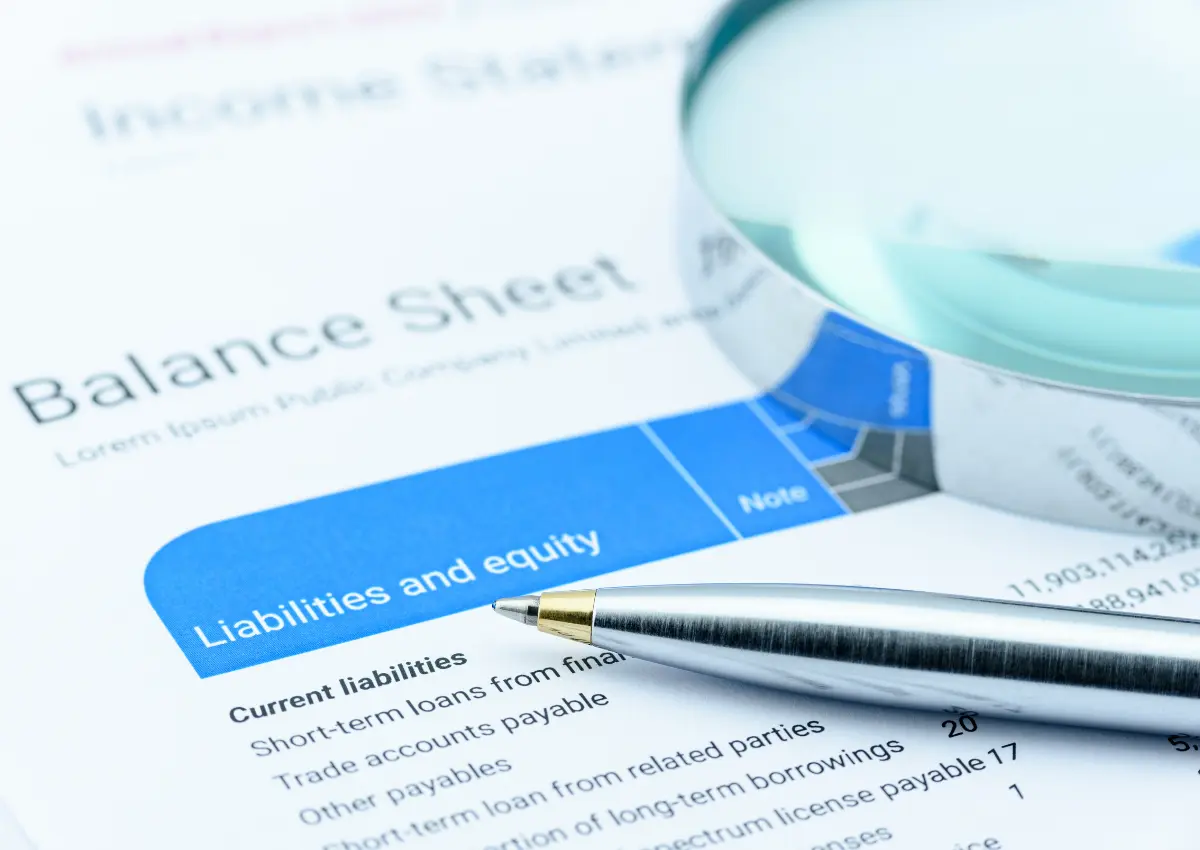Accounting & finance
glossary
Key finance & accounting terms explained
Explore explanations of key terms and concepts, crafted to enhance your financial literacy and decision-making.

Lessor vs. lessee: Understanding the key differences
Learn the main differences between lessor vs. lessee, including their roles, responsibilities, and how lease agreements work for both parties.

Bank reconciliation: Definitions, examples, and tips for a smooth process
This post will cover the basics of bank reconciliation, including examples, how to do monthly reconciliations, and tips for a smooth process.
![Depreciation journal entries: Definition, calculation, and examples [2025]](https://cdn.prod.website-files.com/65effd8bb917b937e17119ef/661ca791dcc14c7544234587_unnamed%2520%252867%2529.jpeg)
Depreciation journal entries: Definition, calculation, and examples [2025]
Depreciation journal entries, a cornerstone of accounting, empower businesses to accurately spread the cost of assets over their lifespan. Learn the basics.

Straight-line depreciation: Definition, formula, and examples
Straight-line depreciation is a widely used method that allocates the cost of an asset evenly over its useful life. Learn how to use the formula and more.

ROU asset and lease liabilities: Everything you need to know
Learn how right-of-use (ROU) assets and lease liabilities impact your financial statements and why ROU assets matter for businesses managing leases.

Fixed assets: Definition, examples, and accounting basics
Learn the basics of fixed assets, why they’re important to your business, and how to account for them accurately in your financial statements.

What is the month-end close process? Everything you need to know
Learn key steps and best practices for the month-end close process and see how NetClose and NetCash can save you time while reducing errors.

Real Estate Depreciation: A comprehensive guide for accountants
Delve into the world of real estate depreciation with this comprehensive guide. Learn why it matters and how it can transform your financial practices.

Asset useful life: Definition and accounting basics
This technical article will delve into the depths of asset useful life, covering its definition, significance, and functionality.

Leasehold improvements: A comprehensive guide for accountants
Leasehold improvements encompass modifications, enhancements, or alterations made to a leased space by the tenant or lessee. Learn how they work and more.

Leasehold Improvement Depreciation Life
In this post, we cover everything you need to know about leasehold improvement depreciation life, from its definition to its benefits and alternatives.

Equipment finance: Definition and accounting basics
Equipment finance is a financial arrangement that helps businesses acquire necessary equipment without paying the full cost upfront. Learn the basics.

Rental property depreciation: A comprehensive guide for accountants
Master the art of rental property depreciation. Get the lowdown on the complexities, tax benefits, and alternatives for managing property investments.

Equipment depreciation: A comprehensive guide for accountants
This post will delve into the technical aspects of equipment depreciation, addressing common questions and providing insights to improve your understanding.

Double-declining balance depreciation method: Definition, benefits, and accounting basics
Learn everything you need to know about the double-declining balance method: what it is, how to calculate it, and the benefits of more accurate asset valuation.

Intangible assets: A comprehensive guide for accountants
This article delves into the intricacies of recognizing, measuring, and disclosing intangible assets, addressing potential pitfalls accountants may face.

Debits and credits: Definition, examples, and accounting basics
Understand the fundamentals of debits and credits in accounting. Learn how these essential concepts form the foundation of double-entry bookkeeping.

Intercompany transactions: Definition, examples, and basics
Learn the basics of intercompany transactions in business operations. Discover how these transactions streamline financial reporting within corporate groups.

Financial reconciliation: Definition, examples, and accounting basics
Financial reconciliation refers to the process of comparing and matching financial records to ensure consistency and accuracy. Learn the basics and more.

Intercompany accounting: Definition, examples, and basics
This post explores the intricacies of intercompany accounting, how it works, its relevance, advantages, disadvantages, and alternative methods.

Accounts receivable journal entry: An accounting guide
dive into ins and outs of the accounts receivable journal entry, from understanding how it works and why it's crucial to exploring its benefits and pitfalls.

Adjusting entries: Definition, examples, and basics
Learn how adjusting entries guarantee accurate financial statements, streamline processes, and pave the way for automation with our comprehensive guide.

Temporary accounts: Definition, examples, and basics
Temporary accounts, also known as nominal accounts, refer to accounts closed at the end of each accounting period. Learn the basics and best practices.

Prepaid expenses: Definition, examples, and basics
This post delves into prepaid expenses, providing a clear understanding of their mechanisms, significance, benefits, potential drawbacks, and alternatives.

Accounts receivable aging reports: Benefits and how to create them
Gain valuable financial insights, streamline collections, and forecast cash flow for your business. Learn how to leverage accounts receivable aging reports.

Order-to-cash: Definition, examples, and accounting basics
Discover the process of order-to-cash, a fundamental business cycle encompassing order processing, inventory management, invoicing, and payment collection.

Journal entry: Definition, examples, and the basics
Take a deep dive into the intricacies of journal entries, explore their importance, benefits, and downsides, and even discuss alternative methods.

Days sales outstanding: Definition, examples, and accounting basics
Learn how to simplify and automate your accounts receivable processes with a focus on Days Sales Outstanding (DSO). Discover effective strategies…

Cash flow forecast: A complete guide for accountants
In this post, we delve into the intricacies of cash flow forecasting, exploring its significance, benefits, and how it aids in financial decision-making

Mastering bad debt expense: A guide for accountants
Delve into the intricacies of bad debt expense, its importance in financial accounting, and how it can impact your business with this comprehensive guide.

Netgain on: Accounts receivable
Discover the importance of accounts receivable in business. Read on to learn how to optimize cash flow and maintain healthy customer relationships.

Working capital: Definition, benefits, and strategies
Working capital represents the amount of liquid assets a company has. Discover the importance of working capital and how it influences your business.

Cash flow: Definition, benefits, and strategies
Discover the importance of cash flow and its impact on financial health. Learn how cash flow works, its benefits, challenges, and alternatives. Simplify and…

Financial statement: Definition, examples, and accounting basics
Dive deep into the concept of financial statements, exploring their importance, how they work, their benefits, potential downsides, and more.

ASC 842: Everything accountants need to know
Learn how ASC 842 has affected lease accounting, what it means for lessors and lessees, and how to simplify compliance with tools like Netgain.

Netgain on: Chart of accounts
A chart of accounts is a list of all the accounts used by a business to classify financial transactions. Learn about how it helps organize financial data.

Netgain on: General ledger
The general ledger serves as the central repository for an organization's financial transactions. Learn the basics and more in this comprehensive guide.

Netgain on: Remittance
Remittance refers to any money transfer made from one person or organization to another. Learn the basics and how processes have become more efficient.

Netgain on: Balance sheet
A balance sheet provides a snapshot of a company's assets, liabilities, and equity. Learn what goes into a balance sheet and how to read one.
